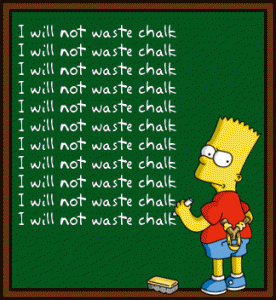Smaller Classrooms Hurt Kids
I’ve been fighting for at least 15 years the bad idea that smaller classrooms necessarily are better. California enacted class-size reductions in the mid-1990s. With budget problems, that “reform” now is being reviewed.
The class-size reductions were advanced by then-Gov. Pete Wilson, who likely would have used the supposed reform as a plank in his presidential bid had it not gone nowhere. And the teachers’ unions backed it because that meant more members for their group, more union dues to the unions and more union political clout. It’s part of the reason the teachers unions, especially the California Teachers Union, are so powerful today.
Wilson, a Republican, effectively empowered the major Democratic group with tax money.
As I pointed out at the time in numerous editorials in The Orange County Register, the problem is that there’s a limited pool of talented teachers. Would you rather be in a large class with a great teacher, or in a small class with a crummy teacher?
The dilemma is not academic. That’s just what happened to the child of some friends of mine the past academic year. The kid had a great teacher in a large class. Then the school split up the class. In their folly, the school thought the smart kids — like my friends’ kid — would better survive the class with the new, inexperienced teacher, who also just wasn’t as good as the old teacher.
It’s a monopoly government system, so objections by the family were politely listened to, then ignored.
Larry Sand
Our friend Larry Sand has a new article up on City Journal’s California section on class-size reduction. A retired teacher, he’s the president of the California Teachers Empowerment Network. He writes:
Everyone agrees that smaller classes are better, right?
In a word: no. Much of the rhetoric supporting small classes is demagogic and runs afoul of the research. Let’s begin with the oft-heard union claim that classes are getting larger. Not quite. A U.S. Department of Labor chart, courtesy of teacher-union watchdog Mike Antonucci, tells the tale. Since the mid-1950s, the number of public-education employees—including teachers—has risen steadily and inexorably nationwide. Brief hiring disruptions occur only during recessionary times, which result in a minor diminution in personnel. Immediately following the downturn, however, the hiring resumes with gusto. The result is that since the mid-1950s, the U.S. student population has increased by 60 percent, while the number of public education workers, including teachers, administrators, and other non-certificated staff, has exploded by 300 percent. (For every new member in California, the union pockets more than $600 a year in dues.) Antonucci has reported on this phenomenon for years. When the economy inevitably contracts, the bellyaching and the hand-wringing about laying educators off begin anew.
What’s more, according to the National Center for Education Statistics, teacher-pupil ratios across the nation have diminished steadily since 1955, when the ratio of public school teachers to students was 26.9 to one. By 1970, the ratio was 22.3 to one. And by 2007, the last year for which federal government statistics are available, the ratio came down to 15.5 to one. In California, going back to 1999, the student-teacher ratio across all elementary and secondary schools was 20.9 pupils. Today, it’s 21.3—a paltry 1.9 percent increase.
Does class size matter to education outcomes? According to Jay Greene, chairman of the Department of Education Reform at the University of Arkansas, most of the evidence on which the “smaller-is-better” crowd relies comes from Tennessee’s STAR project, an experiment conducted in the 1980s, the methodology of which has been questioned by researchers. Other studies tell a different story. In a 1998 study, for example, Stanford’s Caroline Hoxby found that “reductions in class size from a base of 15 to 30 students have no effect on student achievement.” In 1998, Hoover Institution senior fellow and economist Eric Hanushek released the results of his impressive review of class-size studies. Examining 277 separate studies on the effect of teacher-pupil ratios and class-size averages on student achievement, he found that 15 percent of the studies found an improvement in achievement, while 72 percent found no effect at all—and 13 percent found that reducing class size had a negative effect on achievement. While Hanushek admits that in some cases, children might benefit from a small-class environment, there is no way “to describe a priori situations where reduced class size will be beneficial.”
For many, the possibility that reducing class sizes may have negative effects on student achievement might at first seem counterintuitive. But what happened to student test scores as classes got smaller between 1970 and 2007? Nothing, according to data from the National Assessment of Educational Progress, widely regarded as the nation’s report card. The fact is, scores have stagnated for almost 40 years. Moreover, classes are larger in Korea and Japan—two countries that regularly clobber us in educational comparisons.
There’s more in the full article.
Of course, in California today, the facts are the last thing Gov. Brown, the Democratic Party and their union bosses care about.
Only the current economic crisis has brought about a rethinking of class sizes.
July 9, 2011
Related Articles
Pension crisis divides CA Dems on UC tuition hikes
A 14-7 vote Thursday by the full University of California Board of Regents made it official: Golden State Democrats are deeply divided on tuition
It's White Suit Day!
Katy Grimes: Last week Sen. Rodrick Wright reminded colleagues during a hearing that today is the official kick-off of White
State of the State
The Governor, addressing the legislature, said they closed a budget gap of $60 billion last year. Announced that last night




